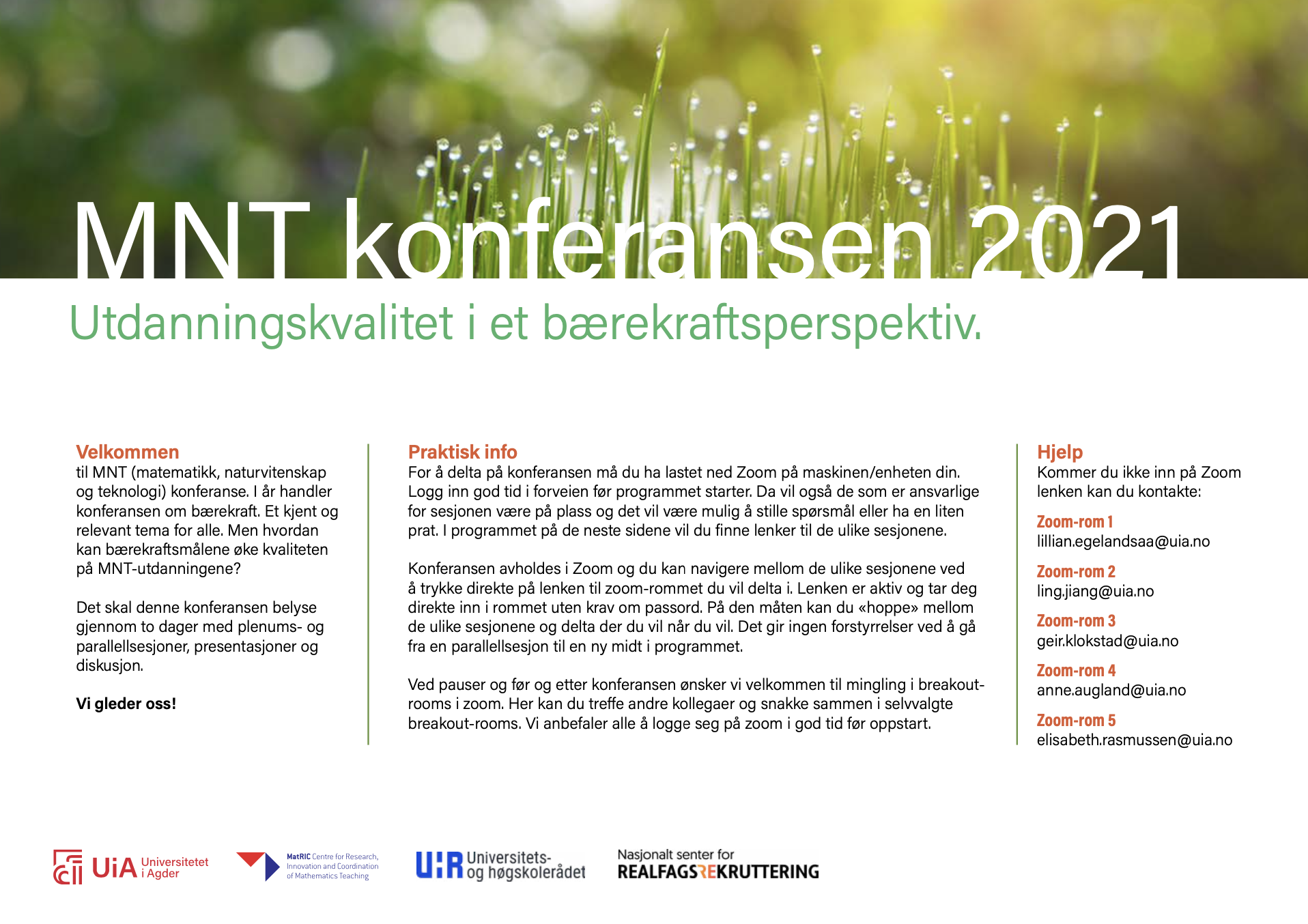Use of an interactive digital assessment tool in mathematics education for engineers
DOI:
https://doi.org/10.5324/njsteme.v5i1.3941Abstract
Basic courses in mathematics for engineers often have more than several hundred participants. To achieve the learning goals it is necessary that the students work actively on specific problems. While working on the problems, students require assistance. As a supplement to guidance by lecturers and teaching assistants, NTNU has piloted use of a digital assessment system STACK, that enables constructive feedback and is to some degree interactive.
We will discuss how we integrate digital assessment into daily teaching practices, show examples of the problems and present some qualitative data collected from actual students.
Nedladdningar
##submission.downloads##
Publicerad
Nummer
Sektion
Licens
Copyright (c) 2021 Andrey Chesnokov, Siebe Van Albada

Det här verket är licensierat under en Creative Commons Erkännande 4.0 Internationell-licens.
The Nordic Journal of STEM Education licenses all content of the journal under a Creative Commons Attribution (CC-BY) licence. This means, among other things, that anyone is free to copy and distribute the content, as long as they give proper credit to the author(s) and the journal. For further information, see Creative Commons website for human readable or lawyer readable versions.
Authors who publish with this journal agree to the following terms:
1. Authors retain copyright and grant the journal right of first publication with the work simultaneously licensed under a Creative Commons Attribution License that allows others to share the work with an acknowledgement of the work's authorship and initial publication in this journal.
2. Authors are able to enter into separate, additional contractual arrangements for the non-exclusive distribution of the journal's published version of the work (e.g., post it to an institutional repository or publish it in a book), with an acknowledgement of its initial publication in this journal.
3. Authors are permitted and encouraged to post their work online (e.g., in institutional repositories or on their website) prior to and during the submission process, as it can lead to productive exchanges, as well as earlier and greater citation of published work (See The Effect of Open Access

